The Early Cretaceous Wessex formation in England is rich in vertebrate fossils, including dinosaurs like Baryonyx and Iguanodon, pterosaurs like Caulkicephalus, many kinds of fish, and even some fragments of small mammals. Today we’ll take a look at one of the most heavily armored denizens of Early Cretaceous Eurasia, Polacanthus, as depicted by Papo.
Polacanthus was a mid-sized ankylosaur, part of the club-less family Nodosauridae. It’s known from most of the skeleton and lots of armor pieces, but very little of the head (we’ll come back to that). It would probably have been about 5 meters long from snout to tail tip, and amply supplied with pebbly armor set into the skin, a pavement-like band of armor across the hips, and large bony spikes that would have helped fend off predators.
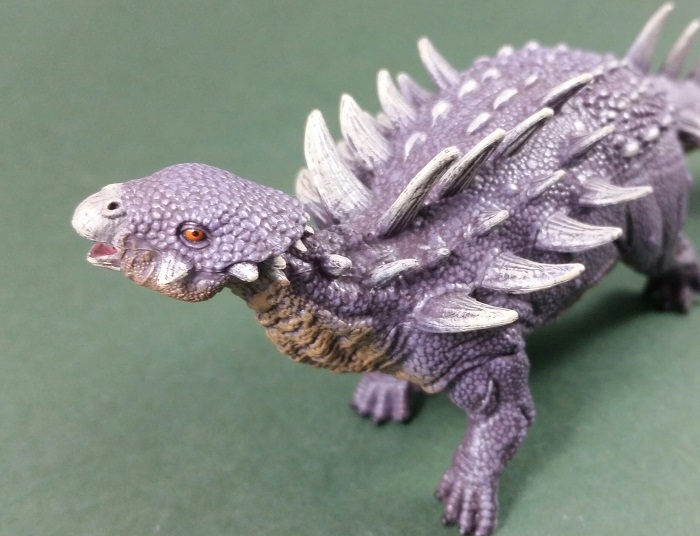
Papo’s version has a lot of nice lifelike details, with very fine scalation, and wrinkles suggesting stretching and folding of the soft tissues as it cranes its neck upward to reach some high leaves or to bellow at a marauding theropod. As a toy, it’s nice-looking for the most part. The purple color would be unusual in large animals today, but then again most of the large animals of today only see two colors. Most dinosaurs probably saw at least three, and as an animal with plenty of armor to protect it, who’s to say it couldn’t have been pretty vibrant?
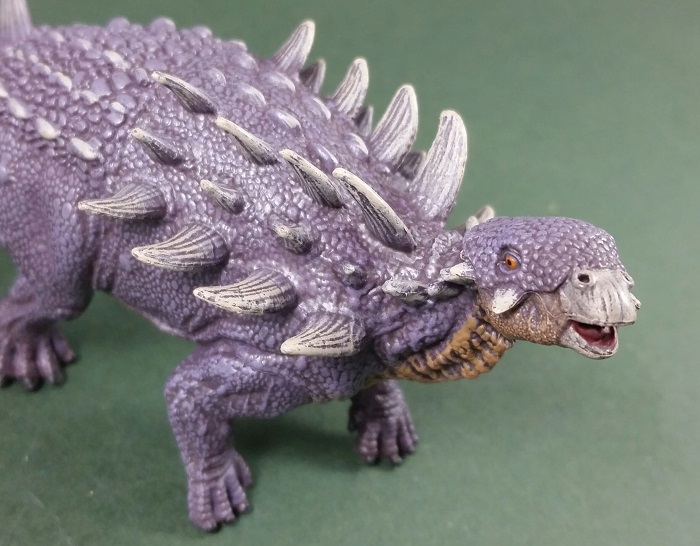
The overall proportions of this figure are middling. Whereas Polacanthus wouldn’t have been as wide-hipped as some of the massive ankylosaurids, it would have been broader over the hips and belly than this figure depicts. The tail is also much too long. Measured along the spine, the toy is about 18.6 centimeters long, making it approximately 1:25 scale by total length. But if you correct for the very long tail, it’s probably closer to 1:30.
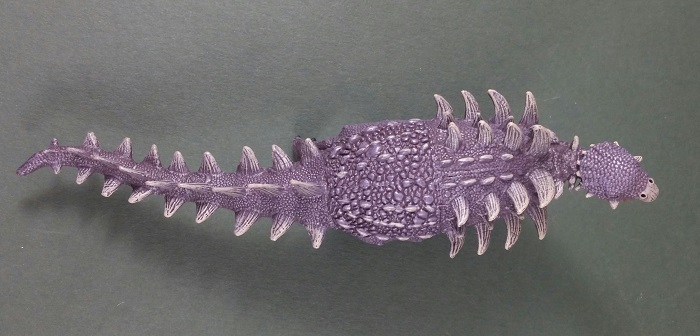
The limbs look about right, with the hindlimbs somewhat longer than the front. Each limb ends in five toes. Whereas the feet and hands of Polacanthus are not well-preserved, the known digit numbers in other ankylosaurs range from 4-5 on the hand and from 3-5 on the foot. So the number of toes on this figure is plausible; however, when ankylosaurs did have 5 digits on the hand it was the outermost digit that was held off the ground and pointed slightly backward, not the innermost.
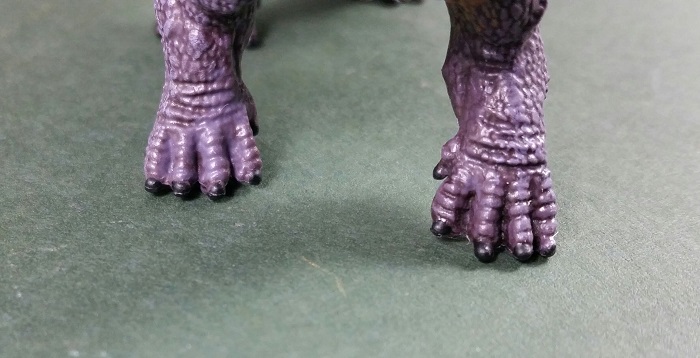
The broad band of pavement-like armor over the hips is reasonably well-rendered, although some of the other armor is likely incorrect. Polacanthus probably bore its tail spikes in two rows, rather than three. The spikes near the shoulders wouldn’t have been so flat in cross-section, and the largest would have had edges that described a quarter turn around their axis of growth.
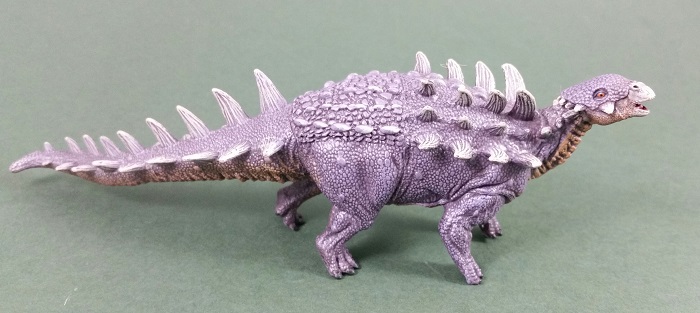
Finally, the head. There is very little known (well, published, at any rate) of the head of Polacanthus: a fragment of the lower jaw, a supraoccipital (right above the hole that the spinal cord runs through), and a piece of what might be the nasal. Some liberties would be forgivable given the lack of fossil material. However, this head morphology is very unlikely. Close relatives with known skulls sometimes show a pair of horns at the back corners of the head, and sometimes don’t, but they don’t ever show a row of tiny horns arced all the way around the back of the head. And whereas Panoplosaurus, for example, had a head very well encased in armor, it was not a solid helmet-like piece, and it certainly did not end in the strange frill-like structure that we see on this figure. It almost looks like the frill of a basal ceratopsian, or the flattened casque of a chameleon.
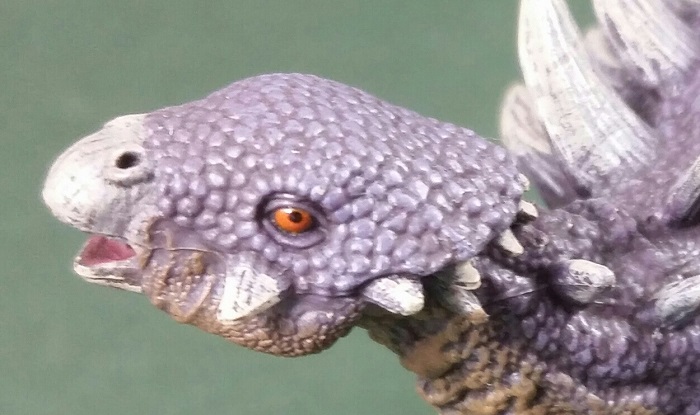
At the other end of the animal, the tail ends in a scaly but un-armored point, which is odd, because the tail tip is known from Polacanthus and it distinctly shows an array of dermal ossicles (armor pieces) around the tip, completely absent on this figure.

From an accuracy perspective, this figure is pretty lackluster. Unfortunately, although there are actually quite a few other Polacanthus toys in the world, most of them aren’t much better. From a sculptural perspective, it looks competently executed, although it doesn’t appear to be the work of Seo Jung-woon, the craftsman behind most of Papo’s dinosaurs. As a toy for children, I think it works fine–the spines are stiff enough to hurt if you step on them, but they’re flexible enough not to do any actual damage. And it’s in a good pose for a battle with your kid’s favorite theropod. As a collector’s item, I would instead recommend the static but more accurate Walking with Dinosaurs version if you can get it. Papo has been turning out some very nice sculpts lately, but this isn’t among their best.
Disclaimer: links to Ebay and Amazon on the DinoToyBlog are affiliate links, so we make a small commission if you use them. Thanks for supporting us!



The Polacanthus is bad enough, but the upcoming Amargasaurus looks even worse.
The voting suggests that other people find more to love in this sculpt than you or I do. I wonder if they’ll be as forgiving of the unicorn Amargasaurus.
Which baffles me to no end.